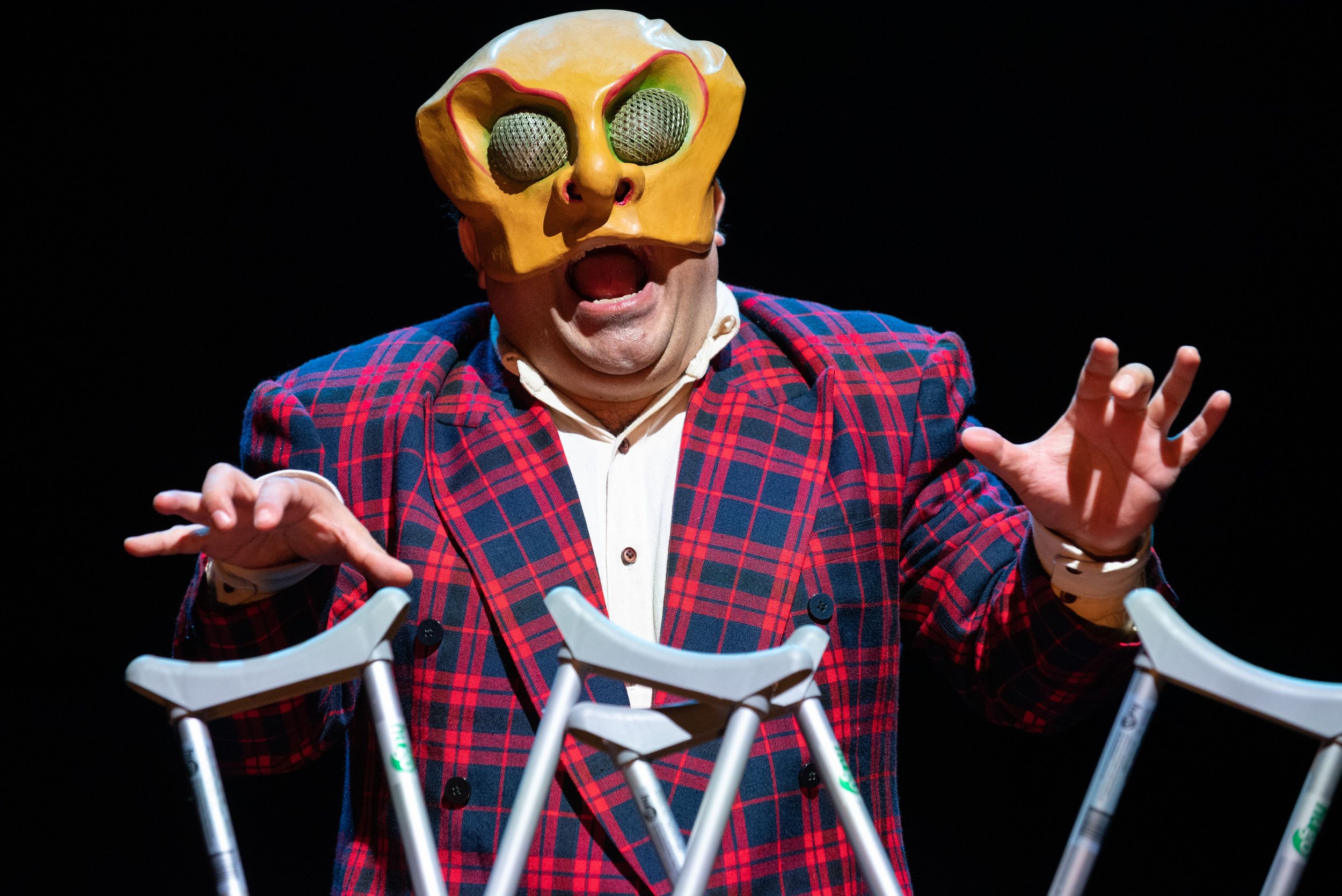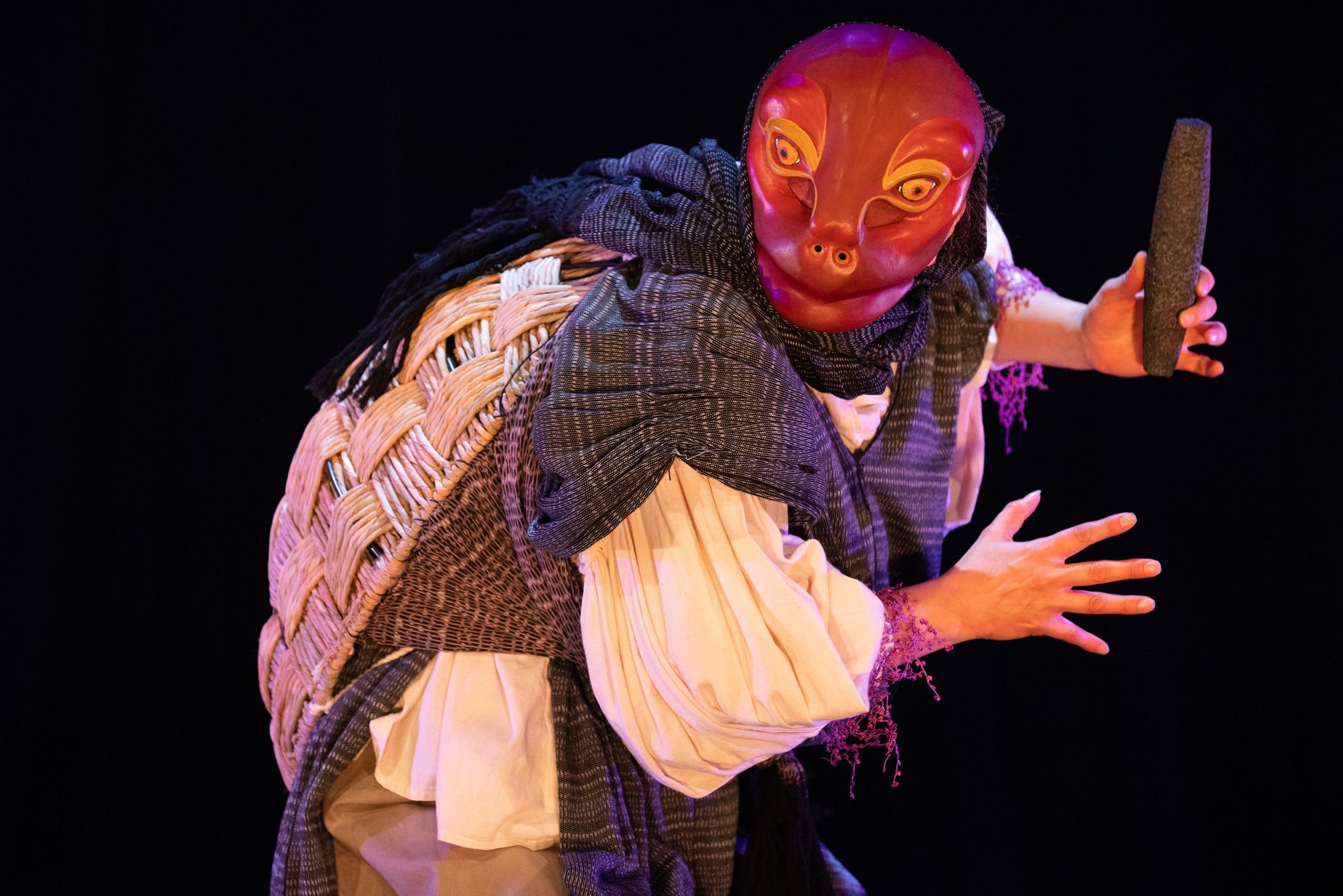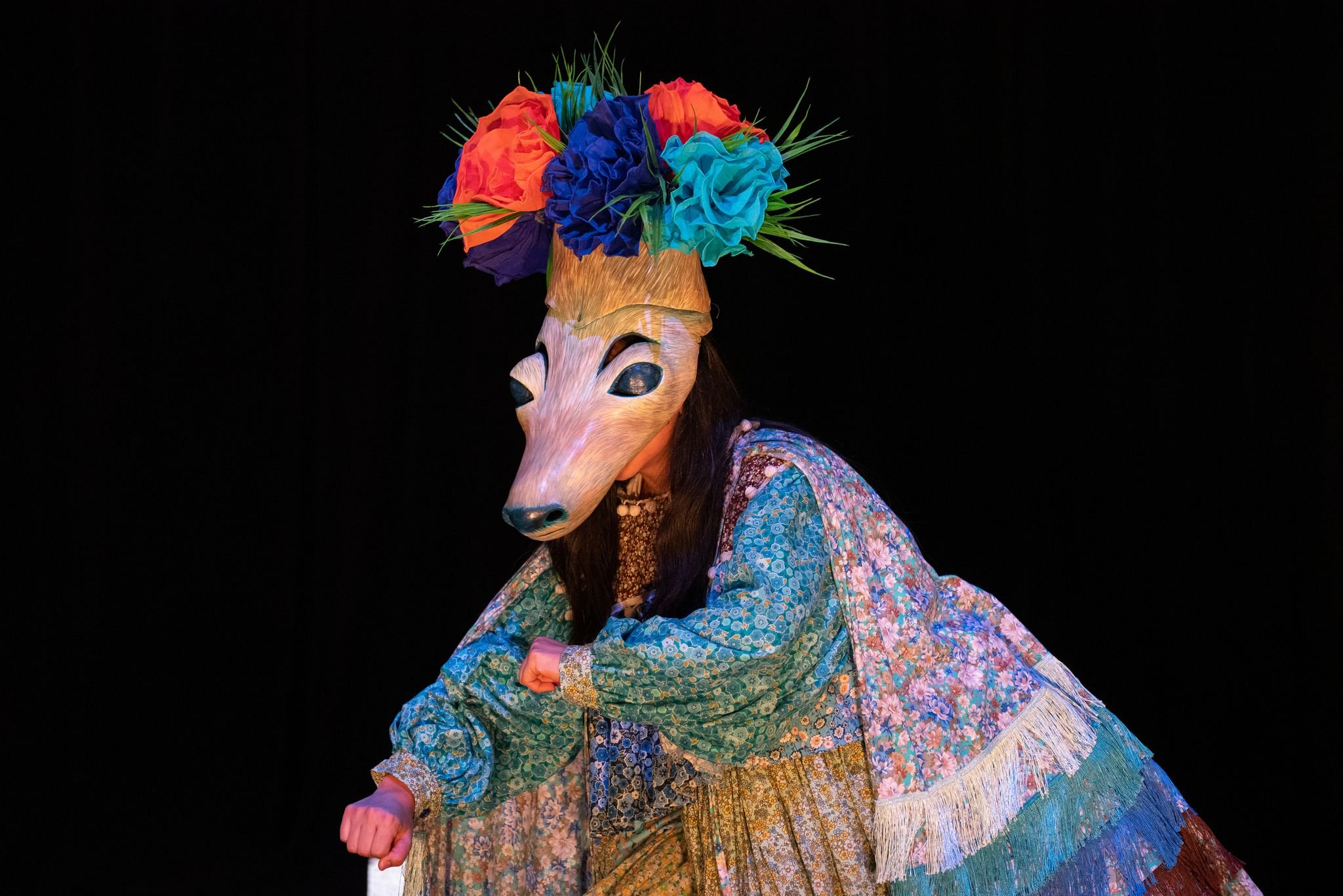Orígenes/Origins: A Bilingual Play in Progress @ Cara Mia Theatre Company
Photo credit: Ben Torres
—Teresa Marrero
Lately I have been obsessing over films and limited series that use a minimal amount of dialogue and rely on movements, images and silences to tell a compelling story. I am referring specifically to the collaborative work of Brit Marling and Zal Batmanglij in the Netflix series The OA or from one of several of her and her collaborators´ films, such as Another Earth with Mike Cahill. And voilá, on Sunday I was whisked away to another world not through film or TV but through live theater with Cara Mía Theatre Company´s newest work-in-progress, entitled Orígenes/Origins.
Although storytelling through movement and images is nothing new within the trajectory of physical theater, particularly contemporary Latin American theater, Cara Mía´s latest adventure tells a moving and meaningful story through the poetic artistry of movement, masks, sound, and images live on stage. While there is language in the piece both in English and Spanish, it is poetic, fragmented, and impressionistic enough to suggest both deeply personal and overarching meanings. This was evident in through the audience comments during the lively talkback. Even a 10-year-old girl said she liked it and understood. The audience members prefaced their comments with “To me…” and therefore, I will follow suit.
To me, as someone who has followed the work of Cara Mía for at least 15 years, I will say that Orígenes/Origins displays the polished artistry of an experienced ensemble. This piece was devised by Cara Mia´s artistic director/actor David Lozano, resident company member and expert mask/maker Frida Espinosa Müller, and actor/director collaborator Sorany Gutiérrez, under the direction of Alicia Martínez Álvarez—and within the context of Cara Mia’s 18 years of workshops with Mexico City´s Laboratorio de la Máscara. Lozano states that he and Espinosa Müller had been working on the idea of their own personal origins for several years. Obie winner-playwright Caridad Svich contributed to the early stages of the script with the use of poetic language and possible scenarios, and Fabricio Cavero contributed original music.
Orígenes/Origins was developed through several exploratory workshops between 2019 and the present, both in Mexico City and at the Dallas Latino Cultural Center, although actual rehearsals took just five weeks.
There are so many dimensions and layers that contribute to the richness of Origins. The storyline is based on the self-discovery journey of a displaced Latina immigrant, a possibly undocumented young woman on a quest to answer the question ¿Quién soy? Who am I? She thinks and speaks of herself as invisible, on the margins of society, an insect.
The initial scene sets the mood through movements and sounds of a whirlwind tornado about to blow apart a house. And it does. Things must be torn down to be rebuilt. The messages touch upon profound truths—self-discovery through introspection, the world-wide military aggressions, population displacements, loss of homes and identities (oftentimes through historical events or natural disasters beyond our personal control), not to mention our post-capitalist penchant towards destruction of our planet’s environment.
Within this whirlwind of images and meanings, I cannot empathize enough the role of the original music and soundscapes created by Fabricio Cavero, who apparently created all of it long distance, never meeting physically with the cast during rehearsal, according to Lozano—who added in a message that the actors devised their own movements under the direction of Martínez Álvarez. There was no choreographer.
Thus, the dance-like movements germinated within the bodies of the actors emerged as a felt inner expression rather than being imposed externally by a single creator. To me, this is amazing. As a dancer myself, I am familiar with the feel of physical communication through non-verbal language. That the ensemble created meaning through music created at a distance, crafting images and their own unique physical language—it’s pure magic. Designer Aaron Johansen’s lighting completed the three-dimensional magic too, setting the mood that both the music and the actors´ movements embodied in Azusena Galicia´s costume designs.
The masks worn by each of the three characters in the piece—the Man, the Woman and the Girl—offer a multiplicity of opportunities for each actor-character to manifest other identities, such as the Ant-Man, the Abuelo/Grandfather, the Mother/Grandmother/Everywoman, and the teen´s inner and outer self (She and the Deer). Sound complex? It is. However, during the talkback it became evident that people understood the main story line because the transitions were seamless. It was very clear, one person said. It spoke to me on many levels, contributed another. This piece must be shown and seen to teens and pre-teens, said a Latina mother. Both English and Spanish were used during the play and in the talk-back with translations offered for both.
All in all, while this piece is billed as a work in progress, audience members felt that this version was fairly complete as it is. There were no serious gaps in logic, and the play had a clearly discernable developmental arc.
To me and evidently to other audience members, the minimalism of the set, the miniature house, the use of a huge rope in various iterations, the use the tiny metate-rock under the Woman´s feet and ultimately under the Girl´s foot, the crutches that become a jail that turn into wings, all contribute to this magical yet real inner journey.
Returning to my obsession with non-verbal communications: In a YouTube interview with Yale photographer/artist Gregory Crewdson, Brit Marling of The OA states that in physical work with series choreographer Ryan Heffington “it felt like there was an energy there, that time stops and you are in mythic time, you don’t know where it begins or where it ends….” This coming from a young artist who dubs our current ‘Generation Selfie’ as a bit empty and disconnected seems more germane than ever. I highlight this popular TV series in hopes of connecting with younger generations tuned-in only to digital media rather than live theater: There is a place for you and your stories onstage, and it can be just as magical as what we see on a screen.
WHEN: May 5-7
WHERE: Latino Cultural Center, 2600 Live Oak, Dallas
WEB: caramiatheatre.org


